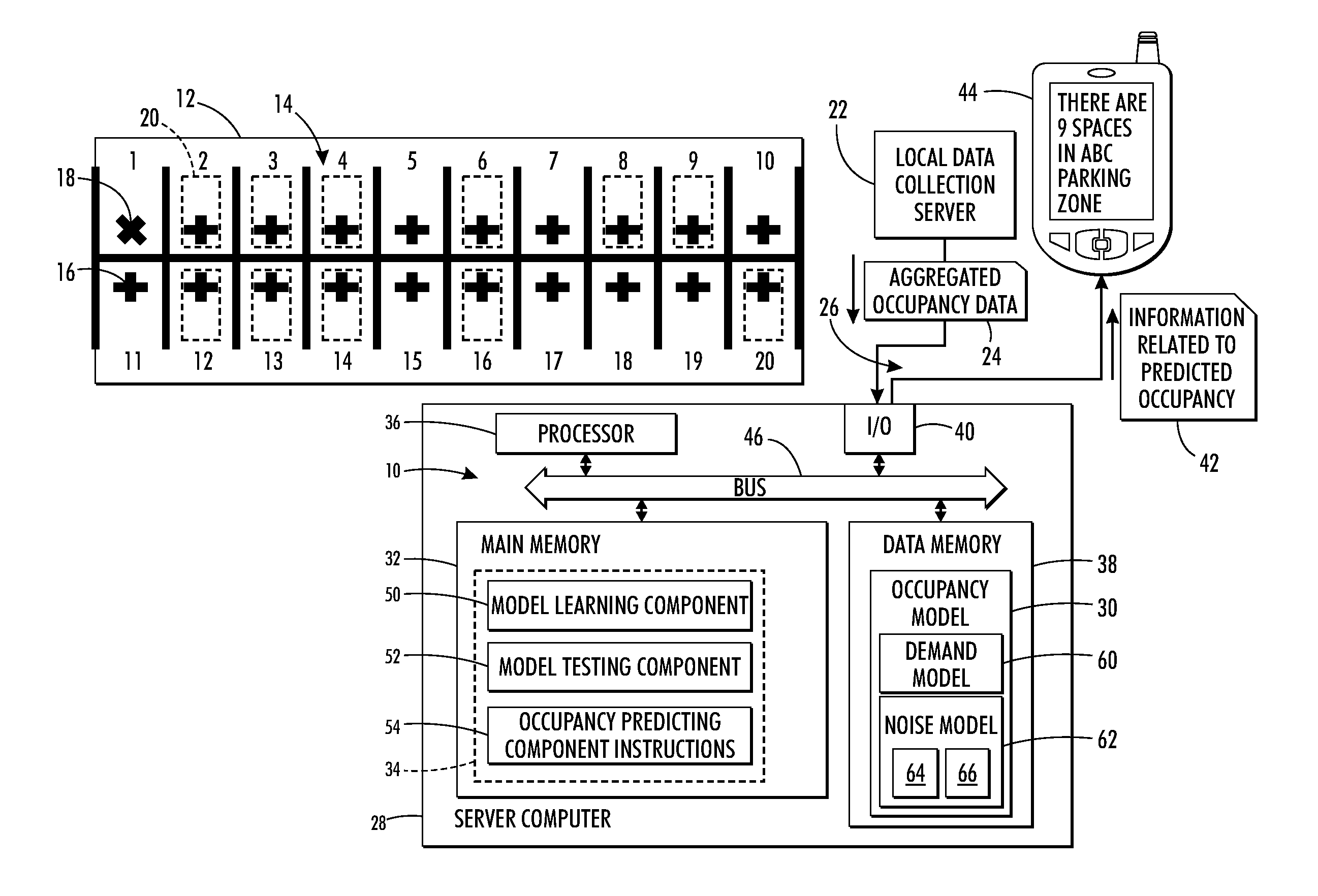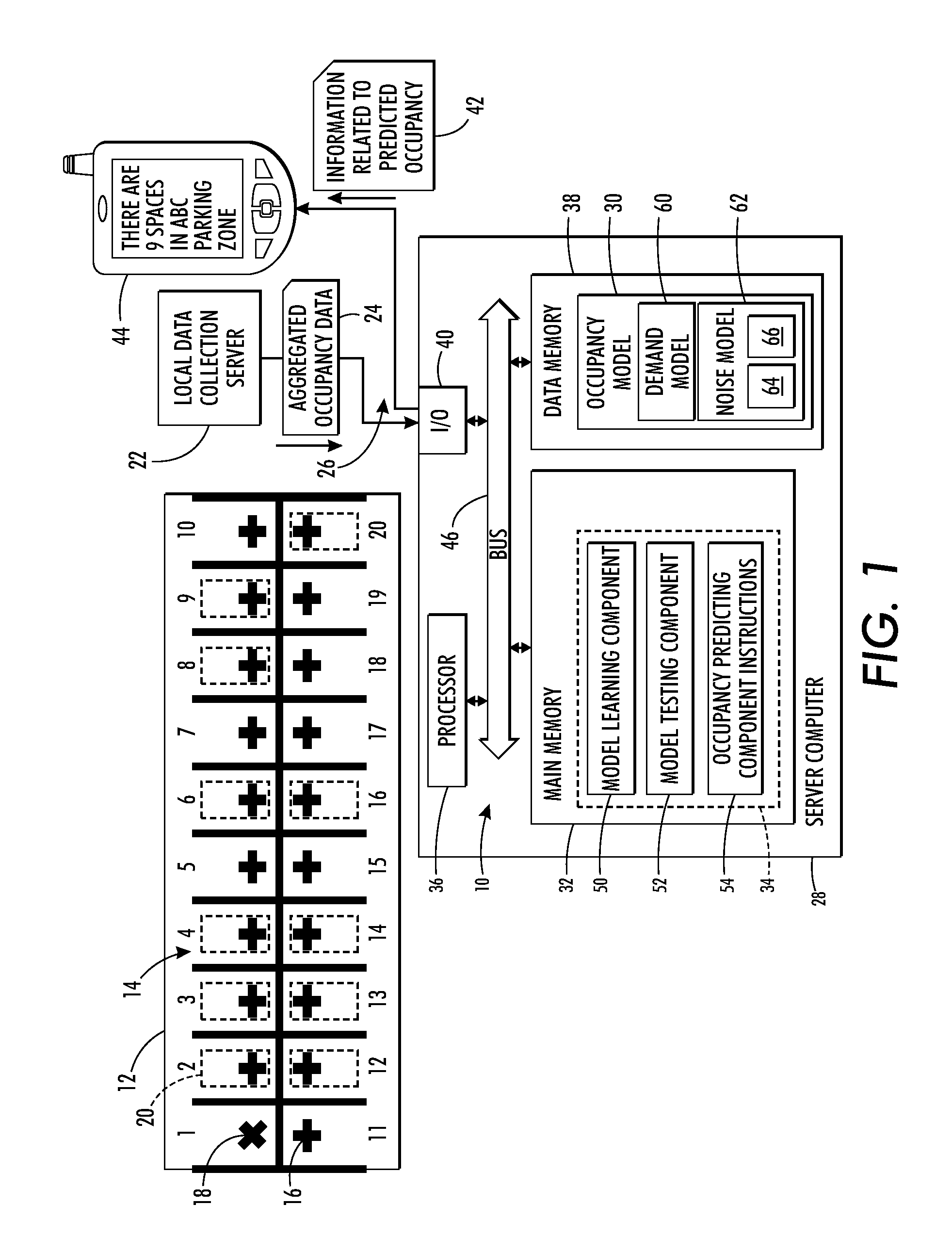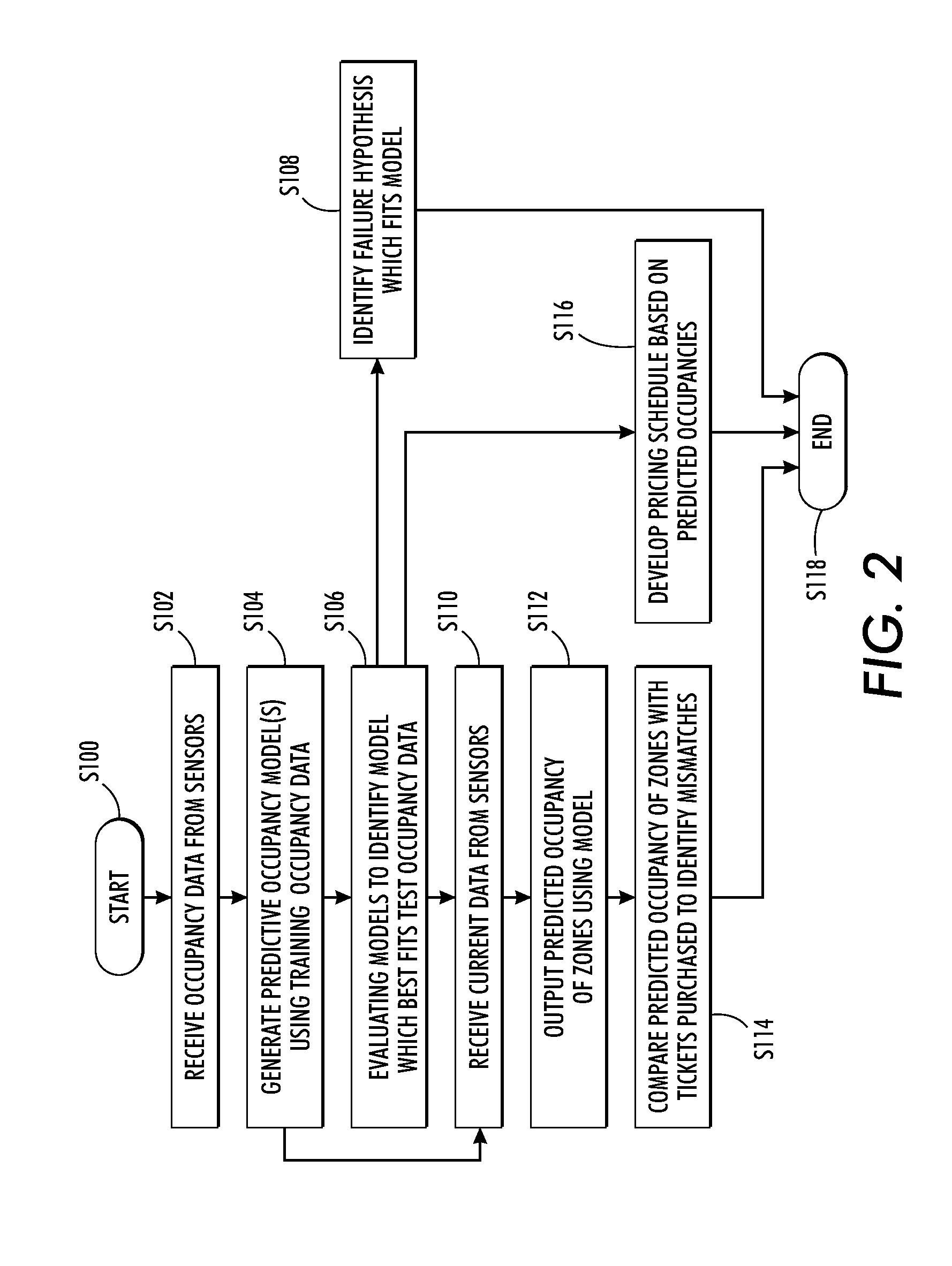Model for use of data streams of occupancy that are susceptible to missing data
- Summary
- Abstract
- Description
- Claims
- Application Information
AI Technical Summary
Benefits of technology
Problems solved by technology
Method used
Image
Examples
examples
[0166]An empirical evaluation of the proposed methods for predicting parking occupancy, given variable blockface capacity was performed.
Experimental Setup
[0167]The dataset 24 used in these experiments was collected from a publicly available data stream which stores the output of parking sensors over large number of locations in a US city. The data warehouse 22 for this system processes the real time data and provides the following information in 60 second intervals for all M=535 blockfaces currently involved in the parking system.[0168]1. ym(t): Observed occupancy at blockface in at time t,[0169]2. Bm(t): Number of sensors working at blockface m at time t,[0170]3. Am: Actual capacity of blockface m.
[0171]For purposes of the evaluation, observations at the beginning of each hour for N=10 consecutive Thursdays were extracted from the data stream, which are treated as comparable observations for learning the occupancy models.
[0172]In the evaluation, only on-street parking was considere...
PUM
 Login to View More
Login to View More Abstract
Description
Claims
Application Information
 Login to View More
Login to View More - R&D
- Intellectual Property
- Life Sciences
- Materials
- Tech Scout
- Unparalleled Data Quality
- Higher Quality Content
- 60% Fewer Hallucinations
Browse by: Latest US Patents, China's latest patents, Technical Efficacy Thesaurus, Application Domain, Technology Topic, Popular Technical Reports.
© 2025 PatSnap. All rights reserved.Legal|Privacy policy|Modern Slavery Act Transparency Statement|Sitemap|About US| Contact US: help@patsnap.com



